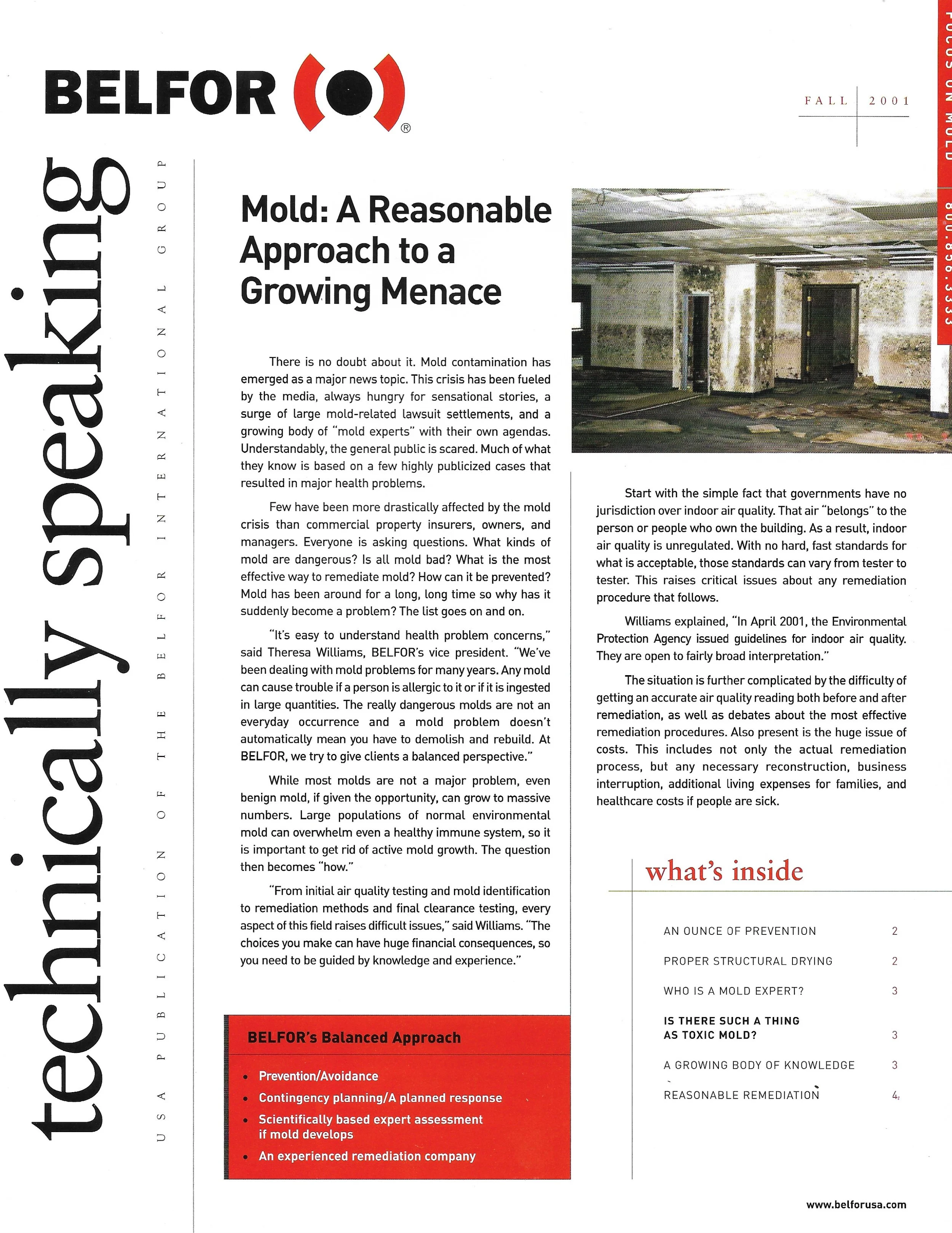
disaster recovery
belfor technically speaking | 2001
Excerpts -
An Ounce of Prevention
Usually, there is no concern for mold unless you have an existing mold problem, so it's important to know how mold grows and how to prevent it. Mold is an opportunistic microorganism. The spores float in the air waiting for optimal growth conditions. It needs a minimum temperature of 40°F, organic matter for food, and most importantly, moisture. Since indoor environments almost always meet the first two criteria, water present for more than 72 hours is the critical ingredient.
Once these criteria are met, mold absorbs molecules of organic matter and begins to multiply. The rate of growth depends on the amount of water and heat present. When mold is found on a metal or tile surface it is somewhat easy to eliminate. However, when mold takes hold in organic materials like sheetrock, carpeting, or wood flooring the remediation issues become more complicated. Furthermore, rapid growth or a disturbance of the mold environment can cause it to release spores into the air, where they go in search of more organic material and their own opportunity to grow.
Who is an Expert?
If you can see mold growing, the top priority is to get rid of it. Many companies bring in an expert (microbiologist, industrial hygienist) to take samples and wait on test results prior to dealing with the problem. Viable test results can take from five to 15 days in a laboratory. Meanwhile, mold spores will continue to multiply inside the facility unless the environment is controlled. Air sampling may be necessary to quantify the air-borne spores, which can help determine the extent of the contamination. If an expert has been retained, they should establish the cleaning protocol and the "clearance criteria."
"There are very few experts in this field, Williams stated. "In instances where the visible mold has been removed and the spore counts are still high, you need an accurate picture of what molds are present, in what quantities, and what locations. Without this information there is a strong possibility that wrong or inadequate remediation procedures will be used. You can end up back where you started."
The truest experts are mycologists, scientists who specialize in the study of mold. Dr. Doug Rice of Colorado State University in Fort Collins, Colorado, is one of the country's leading authorities.
Reasonable Remediation
Once the presence of mold is validated and the types identified, a mycologist or qualified industrial hygienist will recommend the types of remediation required. Yet again, there is debate over the proper methods to use.
"Some remediation companies will tell you to gut the entire floor, building, or house,” Williams says. "Depending on the circumstances that might be the right way to go. Many times the remediation doesn't have to be so drastic. Unless the evidence is overwhelming, ask the remediation company if they only perform mold remediation by gutting a building. If that's the case, it's time for a second opinion.
There are multiple levels of infestation and risk and each calls for a different approach. Each case requires an individual risk assessment that takes into consideration several contributing factors which include: spore density, square footage of affected area, how long a water source has been present, and the type of mold. Only after weighing all the factors can a reasonable protocol be developed.

